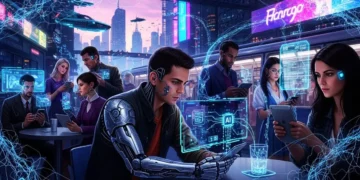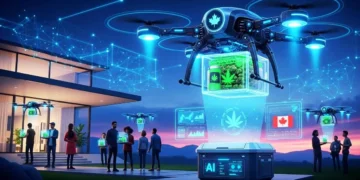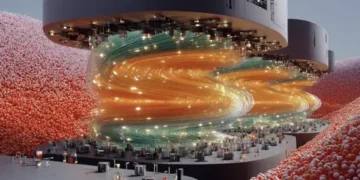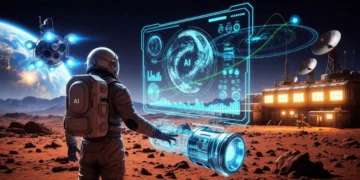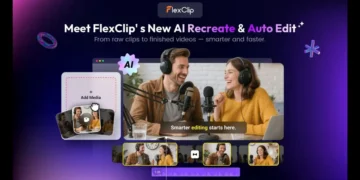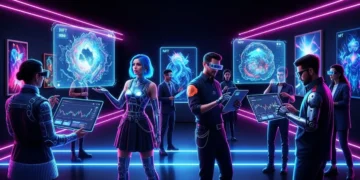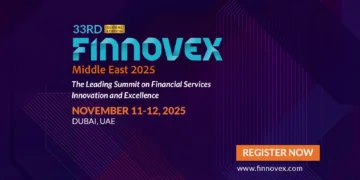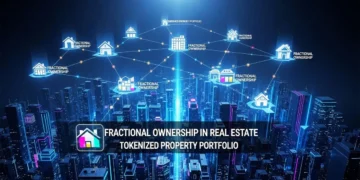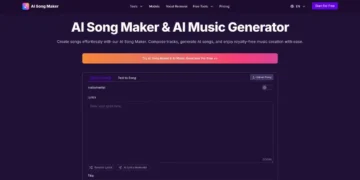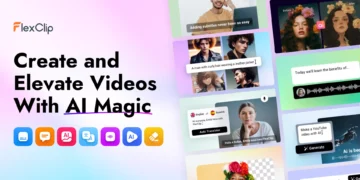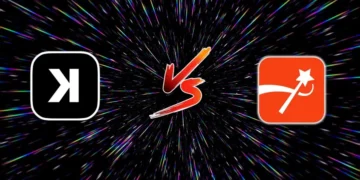Have you ever stared at a blank canvas, digital or otherwise, and felt the pressure of creation? What if you could collaborate with a muse that never sleeps, an engine of infinite inspiration? That’s the reality for a new wave of digital artists who are harnessing artificial intelligence. But the burning question remains: How to monetize AI-generated art in a way that is both profitable and respectful of this new medium?
The digital art world is exploding, and at the intersection of AI and blockchain, a golden opportunity has emerged. It’s no longer just about creating; it’s about strategically positioning your work in a bustling marketplace. This isn’t a distant future—it’s happening right now. Artists are leveraging powerful tools like Leonardo AI and Meta AI to generate stunning visuals, then minting them as NFTs (Non-Fungible Tokens) to build thriving careers. But with great power comes great responsibility, and a need to understand the legal and financial landscape. Are you ready to transform your creative process and learn how artists make money with NFTs?
The market for AI in art is experiencing explosive growth. In 2024, it was valued at approximately $3.2 billion and is projected to reach a staggering $40.4 billion by 2033 . This isn’t a distant future—it’s happening now. From selling AI art on popular marketplaces to understanding the legal nuances of commercial use, a new renaissance is underway. Are you ready to be a part of it? Let’s dive in.
Understanding the AI-Generated NFT Ecosystem
Before you can successfully monetize your AI art, it’s crucial to understand the components that make this ecosystem tick. An AI-generated NFT is a unique digital certificate of ownership, stored on a blockchain, for a piece of art created using artificial intelligence.
What is AI-Generated Art?
AI-generated art is a digital artwork created with tools like MidJourney, DALL·E, or Stable Diffusion. You provide a text description, or “prompt,” and the AI interprets your words to produce a unique visual . This process democratizes art creation, allowing those without traditional artistic training to produce stunning, professional-quality visuals.
The Role of NFTs in Digital Ownership
A Non-Fungible Token (NFT) is a unique digital asset that verifies ownership and authenticity on a blockchain. Unlike cryptocurrencies such as Bitcoin, each NFT is one-of-a-kind and cannot be replicated . For AI artists, this means you can create a verifiably scarce and unique digital asset from your generative art, allowing it to be collected, traded, and sold like a physical painting.
Proven Strategies to Monetize Your AI Art as NFTs
Turning your AI creations into a source of income requires a multi-faceted approach. Here are the most effective strategies for making money with AI art in the NFT space.
1. Selling on Major NFT Marketplaces
The most direct path to monetizing AI-generated NFTs is through dedicated marketplaces. These platforms connect you with a global audience of collectors.
Here’s a comparison of the top platforms for selling your AI art:
| Marketplace | Best For | Supported Blockchains | Key Considerations |
|---|---|---|---|
| OpenSea | Beginners, largest audience, diverse digital assets | Ethereum, Polygon, Solana | High gas fees on Ethereum; use Polygon for lower costs |
| Rarible | Community-driven governance, customizable royalties | Ethereum, Flow, Tezos | 5% fee split between buyer and seller |
| Foundation | High-quality, curated art, exclusive vibe | Ethereum | Invite-only, can command higher prices |
| SuperRare | Single-edition digital fine art, establishing reputation | Ethereum | Focuses on one-of-a-kind pieces |
| Objkt.com | Eco-friendly, low transaction fees, Tezos ecosystem | Tezos | Great for beginners testing the NFT waters |
Pro Tip: Many platforms offer “lazy minting,” where the NFT is only minted on the blockchain once it is sold, saving you upfront “gas fees” (transaction costs) .
2. Creating and Selling AI Art Prompts
Your expertise as an artist isn’t limited to the final image. If you have a talent for crafting detailed, effective prompts that generate stunning results, you can sell AI art prompts themselves . This is a fantastic way to build an additional revenue stream and establish your authority in the AI art community. You can sell prompt packs or guides to other creators looking for inspiration and to improve their own work.
3. Licensing Your AI Art for Commercial Use
While selling an NFT often transfers ownership, you can also explore licensing your AI-generated art for specific commercial purposes. This can be a source of income separate from your NFT sales . For example, a buyer might purchase an NFT for their personal collection but pay an additional fee to license the image for use in an advertising campaign. Always clarify the rights being transferred in each sale.
4. Offering Custom Commissions
The demand for personalized digital art is high. You can offer custom AI art commissions for individuals or businesses seeking unique visuals . Promote your portfolio on social media, set clear pricing and timelines, and be transparent with clients about the AI process to manage expectations effectively. This can lead to strong client relationships and a more consistent income.
Understanding the AI Art Revolution: More Than Just a Filter
Before we talk about money, let’s talk about craft. AI art generation is not about pressing a button and getting a masterpiece. It’s a nuanced process of curation, prompt engineering, and often, significant post-processing. The artist’s role evolves from sole creator to creative director.
What Are the Key Tools Powering This Movement?
The quality of your AI art is directly tied to the tools you use. While dozens of platforms exist, a few have become industry standards for serious artists.
Leonardo AI: This platform is a favorite for its control, high-quality outputs, and model training capabilities. It allows artists to fine-tune the AI on their own style, creating a unique and recognizable aesthetic that is crucial for building a brand. When you see an NFT collection with a consistent, high-fidelity style, there’s a good chance Leonardo AI was involved in its creation.
Meta AI: With models like Emu integrated into Instagram and other social platforms, Meta AI is making AI art incredibly accessible. While sometimes viewed as more consumer-focused, savvy artists use these tools for rapid prototyping, idea generation, and creating content for social media to build an audience. The question, “Can I sell ChatGPT images?” often extends to other AI platforms, and we’ll address the crucial legal distinctions later.
Digen AI: This represents the next evolution—platforms focused not just on generation, but on the entire workflow. Digen AI and similar tools help with upscaling, animation, and preparing assets specifically for the NFT minting process, streamlining the journey from concept to marketplace.
So, does AI-generated content get monetized? Absolutely. But the most successful artists treat these tools as a starting point, not the finish line.
A Step-by-Step Guide to Creating and Selling Your First AI NFT
Feeling overwhelmed? Let’s break down the process of creating and selling NFT art into simple, actionable steps.
Step 1: Develop Your Concept and Generate the Art
Every successful NFT starts with a strong concept. What story do you want to tell? What is your unique artistic style?
Choose Your AI Tool: Select a platform that aligns with your goals. ArtSmart.ai is great for beginners and pros, MidJourney offers high aesthetic quality, and Stable Diffusion provides more control for advanced users .
Craft Your Prompt: This is where the magic happens. Be as descriptive as possible. Instead of “a dragon,” try “a majestic crystal dragon soaring through a neon-lit cyberpunk cityscape, digital art.”
Refine and Upscale: Use post-processing tools like Photoshop or Topaz Gigapixel to clean up artifacts, adjust colors, and increase the resolution for a polished, professional result .
Step 2: Set Up a Digital Wallet and Fund It
To interact with NFT marketplaces and blockchains, you’ll need a digital wallet. This wallet stores your cryptocurrencies and your NFTs.
Choose a Wallet: MetaMask is the most widely used wallet and is supported on many platforms . Other popular options include Trust Wallet and Coinbase Wallet .
Fund Your Wallet: You’ll need a small amount of cryptocurrency to pay for gas fees (e.g., ETH for Ethereum, XTZ for Tezos). You can purchase this on an exchange like Coinbase and transfer it to your wallet.
Step 3: Choose Your Blockchain and Mint Your NFT
This is the step where your digital art becomes a permanent, ownable asset on the blockchain.
Select a Blockchain: Your choice impacts fees, speed, and audience.
Ethereum: The most established but often has high gas fees.
Polygon: A “Layer 2” solution for Ethereum with extremely low fees .
Tezos: Known for being eco-friendly and cost-effective, perfect for beginners .
Mint on Your Chosen Marketplace: Connect your wallet to the marketplace (like OpenSea or Objkt), upload your final AI artwork, add a compelling title and description, and follow the steps to mint.
Step 4: Price Your NFT and Create Your Listing
Pricing is both an art and a science. Consider these factors:
Rarity and Uniqueness: Is it a one-of-one (1/1) or part of a limited edition series?
Artistic Value and Quality: The complexity and visual impact of the piece.
Market Trends: Research what similar AI art NFTs are selling for.
Your Reputation: As you build your brand, you can command higher prices.
You can list your NFT at a fixed price or start a timed auction . Don’t forget to set your royalty percentage (typically 5-10%) so you earn a commission on all future secondary sales!
Beyond the Hype: Navigating Challenges and Best Practices
The path to making money with AI art isn’t without its obstacles. Here’s how to navigate them like a pro.
Understanding the Legal Landscape: Is It Legal?
Is it legal to sell AI-generated art as an NFT? In most cases, yes. However, the legality depends heavily on the license terms of the AI tool you use .
Commercial Rights: Free trials or accounts are often limited to personal use. To sell your art, you must use a platform or subscription tier that grants full commercial rights .
Copyright and Originality: Be cautious of generating art that directly mimics copyrighted styles or characters (e.g., “in the style of a famous Disney character”). Focus on creating unique, original works to avoid intellectual property disputes .
Optimizing for Success: Marketing and Community Building
Simply minting an NFT isn’t enough. To stand out, you need to market your work.
Build a Strong Social Media Presence: Use Twitter (X), Instagram, and Discord to showcase your work, share your creative process, and connect with the NFT community .
Tell a Story: Collectors buy into the artist as much as the art. Share the inspiration and narrative behind your pieces .
Engage and Collaborate: Participate in community discussions, collaborate with other artists, and consider leveraging influencers to amplify your reach .
Your Step-by-Step Guide: How to Sell AI Art as NFT
Turning your AI-generated image into a sold NFT requires a clear, strategic process. Let’s break down the exact steps from creation to cash.
Step 1: Ideation and Creation with a Unique Twist
Your first step is to create compelling art. But remember, everyone has access to these tools. Your differentiator is your idea and your input.
Develop a Signature Style: Use Leonardo AI to train a model on your own artwork or a specific aesthetic you love. This creates a unique output that can’t be easily replicated.
Combine and Edit: Don’t just use a single output. Many artists use AI to generate elements, which they then composite and edit in software like Photoshop or GIMP. This adds a layer of human touch that collectors value.
Step 2: Choosing the Right NFT Marketplace
Where you mint your art is as important as the art itself. Different platforms cater to different audiences.
OpenSea: The largest marketplace, great for exposure but highly competitive.
Rarible: Another major player with a strong community.
Foundation: Known for its curated, invite-only approach, which can lend prestige to your work.
SuperRare: Focuses on single-edition, high-art digital pieces.
When considering how to sell AI art as NFT, research the community and fee structure of each platform. Be transparent that AI was part of your process; authenticity builds trust.
Step 3: The Minting Process and Gas Fees
“Minting” is the process of publishing your unique token on the blockchain. This can involve “gas fees” (transaction costs on the Ethereum network). To save money, look for platforms that support “lazy minting,” where the gas fee is only paid once the NFT is sold.
Step 4: Pricing Your AI Art Correctly
This is one of the biggest challenges for new artists. How much should you charge?
The Artist’s Business Mindset: Pricing Models and Financial Rules
Moving from a hobbyist to a professional requires a shift in mindset. Let’s explore some of the financial principles that guide successful artists.
What is the 70/30 Rule in Art?
This is a foundational principle for many creative businesses. It suggests that 70% of your art-related income should come from 70% of your clients (your core audience), while 30% should come from 30% of your clients (premium collectors). In practice for NFTs, this means:
70% of your revenue might come from open editions or more affordable 1/1 pieces.
30% of your revenue should be aimed for from high-value, 1/1 auctions or exclusive collections for top-tier collectors.
What is the 80/20 Rule in Art? (The Pareto Principle)
The Pareto Principle, or the 80/20 rule in art, is even more critical. It states that 80% of your results will come from 20% of your efforts.
80% of your sales will come from 20% of your collectors.
80% of your exposure will come from 20% of your marketing efforts (e.g., one viral Tweet).
Focus your energy on nurturing relationships with that key 20% of your audience and doubling down on the marketing channels that actually work.
What is the 1/3 Rule in Art?
This is a practical pricing rule used by many traditional artists, but it applies beautifully to digital art. When calculating a price, you should consider:
1/3 for Materials/Tools: The cost of your software subscriptions, Leonardo AI credits, gas fees, etc.
1/3 for Your Time: Pay yourself an hourly wage for the time spent creating, editing, and minting.
1/3 for Profit: The pure profit that allows you to reinvest in your business.
For a physical good like a painting, someone might ask, “How much should I charge for a 24×36 painting?” They’d use this rule. For digital art, replace “canvas and paint” with “software and blockchain fees.”
Debunking the 30% Rule for AI
You might have heard of a 30% rule for AI, suggesting you should spend 30% of your time learning new AI tools. While continuous learning is vital, a better mantra is to spend 80% of your time on creation and marketing, and 20% on tool exploration. Don’t get lost in the tech; use it to serve your art.
How to Monetize AI-Generated Art?
With these tools in hand, many artists ask, “How to monetize AI-generated art?” Here are proven strategies growing in 2025:
1. Selling NFTs on Marketplaces
Mint your AI-generated art into NFTs on platforms like OpenSea or Rarible. This involves creating a digital wallet (e.g., MetaMask), uploading your art, setting prices or auctioning it, and paying any associated gas or marketplace fees. The uniqueness and verifiable authenticity of NFTs attract collectors globally.
2. Print-on-Demand Merchandising
Upload your AI art to print-on-demand services such as Redbubble or Printify. These allow you to sell your artwork on physical products without managing inventory, offering a scalable revenue stream.
3. Licensing and Private Label Rights
Creators can sell digital products with private label rights (PLR), enabling buyers to customize and resell the artwork, creating an additional revenue avenue.
4. Building a Following and Collaborations
Sharing your AI art on social media and engaging with the NFT community can expand your audience. Collaborations and mutual promotions increase credibility and sales potential.
Legal Considerations in Selling AI-Generated Art
A frequently asked question is, “Can you legally sell AI-generated art?” The legality generally depends on the AI tool’s licensing terms and ownership rights. While many platforms allow monetization, concerns arise around copyright if AI is trained on unlicensed data. Artists should stay informed about ongoing legal debates, especially regarding copyright and data use by models like Meta AI, where content from social networks is used to train algorithms.
Key AI Art Monetization Rules Explained
Understanding artistic and monetization rules sharpens your strategy:
The 30% Rule for AI often refers to revenue-sharing models on NFT platforms or involvement fees (e.g., OpenSea charges about 2.5% per sale).
The 70/30 Rule in Art traditionally pertains to how revenue splits between artists and galleries or platforms.
The 80/20 Rule in Art highlights that 80% of art sales revenue usually comes from 20% of the artists or artworks, emphasizing the importance of standing out.
The 1/3 Rule in Art typically relates to pricing strategies, ensuring that production cost, profit margin, and market price are balanced.
Are you curious about how these rules affect your pricing and profits? Understanding them can drastically optimize your NFT sales strategy.
Pricing Your AI-Generated Art
How much should you charge for your art? For example, a physical 24×36 painting might range widely, but digital AI art pricing depends on factors like demand, uniqueness, and platform fees. Experiment with limited editions, auctions, and fixed prices to find what resonates with buyers.
Finding the right price point is critical. Here’s a rough guide to get you started :
Affordable / Entry-Level NFTs: 0.01 – 0.05 ETH (or equivalent on other chains). Great for building a collector base.
Mid-Range / Established Artist: 0.05 – 0.2 ETH. For when you have a proven track record of sales.
High-Value / Premium Artworks: 0.2+ ETH. For exceptional, one-of-a-kind pieces from highly sought-after artists.
How AI Has Changed the NFT Art Scene
The traditional art creation process can be labor-intensive and time-consuming. However, with AI-powered tools such as DALL·E 3, MidJourney, and RunwayML, artists can now generate stunning visuals from textual prompts, blending creativity with technology. These tools enable the transformation of ideas into digital masterpieces without needing advanced coding or design skills.
Moreover, AI’s role extends beyond creation; it assists in market trend analyses, personalized recommendations, and even dynamic NFT designs that evolve with user interaction. How do you think such technology could reshape your creative workflow or collection strategy?
Top Platforms for Selling AI-Generated NFTs
Artists looking to monetize AI art have an expanding marketplace to choose from. Leading NFT platforms like OpenSea, SuperRare, and Art Blocks provide global exposure and seamless integration for minting, selling, and trading AI art NFTs. Additionally, marketplaces such as Sellfy allow creators to sell digital downloads and merchandise related to their AI art, diversifying income streams.
These platforms typically leverage blockchain technology — often Ethereum — to secure ownership, royalties, and resale tracking via smart contracts. This means artists continue to earn from secondary sales, a crucial advantage over traditional art sales models.
Monetization Strategies for AI Art NFTs
Direct Sales on NFT Marketplaces: Creating and listing AI-generated art NFTs on popular marketplaces attract collectors interested in innovative digital art forms.
Personalized and Interactive NFTs: AI enables the creation of NFTs that adapt based on viewer interaction, increasing engagement and resale value.
Limited Editions and Scarcity: By issuing limited amounts of AI art NFTs, artists can enhance exclusivity, driving higher prices and desirability.
Collaborations and Collections: Joining forces with designers or other creators on generative art NFT projects expands reach and marketing effectiveness.
Did you know that some AI-generated NFT art collections have reached sales volumes of tens of millions of dollars, demonstrating the market’s potential for high ROI?
Examples of Successful AI-Generated NFT Art Projects
Lost Poets by Pak: This project blends generative art with gaming elements, amassing $70 million in initial sales and showcasing how AI art can be both collectible and interactive.
Fidenza by Tyler Hobbs: A highly recognized generative art series with pieces selling for over $100,000, illustrating how AI-assisted generative art can command premium prices.
Artificial Intelligence Art by AI Art House: Over 1,000 pieces available on OpenSea, many offering physical prints alongside digital ownership, merging tangible and digital art markets.
The Future of AI-Generated NFTs
The convergence of AI and blockchain is still in its early stages. The future points toward greater utility, with NFTs acting as keys to exclusive communities, granting access to future airdrops, or even being used in virtual worlds and games . As technology advances, we can expect more sophisticated AI models capable of generating even more complex and interactive digital assets.
Can You Sell ChatGPT Images and Use ChatGPT to Make Money?
You might wonder, “Can I sell ChatGPT images?” While ChatGPT excels in text generation, pairing it with AI art generators like Leonardo AI or Meta AI helps create original images. Selling these works is feasible, provided you respect licensing terms. Also, using ChatGPT to make money is viable through content creation, marketing, and AI-assisted business processes.
Navigating the Legal Maze: Can You Legally Sell AI-Generated Art?
This is the million-dollar question. The legal landscape is still evolving, but here’s the current state as of 2024.
The Copyright Conundrum
In the United States, the U.S. Copyright Office has consistently held that works created solely by a machine without human authorship cannot be copyrighted. However, and this is a crucial however, if a human contributes creatively to the work in a “significant way,” it may be eligible.
So, can you legally sell AI-generated art? The answer is: Yes, but you must be strategic.
Significant Modification: If you generate an image with Meta AI or Digen AI and then significantly alter it in Photoshop—changing composition, adding elements, painting over parts—you have added substantial human authorship. This strengthens your copyright claim.
Curatorial Selection: The act of selecting and refining prompts to achieve a specific result is also considered a creative contribution, though its legal weight is still being tested.
Platform Terms of Service: This is critical! Always read the Terms of Service (ToS) of the AI platform you use. Some, like Leonardo AI, grant you a commercial license to the images you generate. Others may have restrictions. Can you sell ChatGPT images? OpenAI’s ToS generally grant you ownership of the output, including for resale, provided you comply with their content policy.
The key is transparency and effort. The more human creativity you inject, the stronger your legal and ethical standing.
Beyond the Single Sale: Advanced Monetization Strategies
Selling single NFTs is just the beginning. The most successful artists build ecosystems around their work.
1. Building a Strong Brand and Community
Your art is your product, but your community is your foundation. Use Twitter (X), Discord, and Instagram to share your process, talk about your use of Leonardo AI, and engage with followers. People buy from artists they know and like.
2. Creating Generative Collections
Instead of one NFT, create a collection of 1,000, 5,000, or 10,000 unique pieces. By using AI to generate hundreds of traits (backgrounds, accessories, clothing) and then coding a script to combine them randomly, you can create a “PFP” (Profile Picture) collection. This approach, popularized by projects like Bored Ape Yacht Club, can generate massive revenue and foster a powerful community.
3. Royalties: The Gift That Keeps on Giving
One of the killer features of NFTs is the ability for creators to earn a royalty (typically 5-10%) on every secondary market sale. This means if your art becomes popular and is resold for a higher price, you get a cut. This creates a sustainable, long-term income stream.
4. Can I Use ChatGPT to Make Money? (Expanding Your Arsenal)
Absolutely! While Can you sell ChatGPT images? isn’t directly applicable, ChatGPT is a powerhouse for the business side of your art.
Writing Compelling NFT Descriptions: A good story sells.
Generating Marketing Copy: For your Twitter threads and Discord announcements.
Brainstorming Collection Ideas and Lore: Develop the narrative universe behind your art.
Coding Smart Contracts: For advanced users, it can help write and audit code for your collections.
So, can I use ChatGPT to make money? In the context of an NFT art business, it’s an invaluable and profitable co-pilot.
Conclusion
The journey of monetizing AI-generated NFTs is not about machines replacing artists. It’s about artists who use machines outperforming those who don’t. It’s a collaboration between human vision and algorithmic power. By mastering tools like Leonardo AI, understanding the financial principles like the 70/30 rule in art, navigating the legalities with wisdom, and building a genuine community, you can turn your passion into a profession.
The canvas is no longer blank. It’s waiting for your prompt.
What’s the first AI art concept you’re going to develop into an NFT? Share your ideas in the comments below—we’d love to hear from you!
Frequently Asked Questions (FAQs)
Is it legal to sell AI-generated art as NFTs?
In most cases, yes. However, you must check the licensing agreement of the AI tool you use. Most free versions are for personal use only, while paid subscriptions typically grant you the commercial rights needed to sell your creations as NFTs .
What is the best NFT marketplace for AI art beginners?
For beginners, OpenSea on the Polygon blockchain or Objkt on the Tezos blockchain are excellent choices. They offer user-friendly interfaces, large audiences, and significantly lower transaction fees compared to using Ethereum directly, making it less risky to start .
How much does it cost to create and sell an AI NFT?
The cost can vary. Creating the art itself may just be the cost of your AI tool subscription. The main cost comes from “gas fees” to mint and list the NFT on the blockchain. These can range from a few cents on Tezos or Polygon to over $100 during busy times on Ethereum. Using “lazy minting” can often eliminate upfront fees .
How do I price my AI-generated NFT?
Pricing depends on factors like originality, resolution, your reputation, and market demand. Research similar artworks on your chosen marketplace. A common strategy for newcomers is to start with a lower, accessible price (e.g., 0.01 ETH) to attract your first collectors and build a sales history .
Can I sell the same AI art as both an NFT and a print?
Yes, you can. Selling an NFT typically means selling the unique digital token representing ownership. You often retain the copyright, allowing you to also sell physical prints or digital downloads of the same image on platforms like Etsy or Redbubble. However, transparency with your NFT collectors about your plans is always a good practice .
How to monetize AI-generated art?
You can monetize AI-generated art primarily by selling it as NFTs on platforms like OpenSea and Rarible. Additional methods include offering print-on-demand products, licensing the art, using it in freelance projects, and building a community through memberships.
How do artists make money with NFTs?
Artists make money with NFTs through primary sales (the initial minting and sale), secondary market royalties (a percentage of every future sale), and by using the NFT as a key to access exclusive communities, merchandise, or real-world events.
Does AI-generated content get monetized?
Yes, AI-generated content is actively being monetized across various fields, including digital art (NFTs), stock photography, advertising, book illustrations, and video game assets, provided the creator complies with the tool’s licensing terms and adds significant creative input.
How to sell AI art as NFT?
To sell AI art as an NFT: 1) Create and refine your art using tools like Leonardo AI. 2) Choose an NFT marketplace (e.g., OpenSea). 3) Set up a crypto wallet. 4) Mint your artwork by uploading the file and adding a description. 5) Set a price and list it for sale.
What is the 30% rule for AI?
There is no standard “30% rule for AI.” It’s sometimes used anecdotally to suggest spending a portion of your time learning new AI tools, but a more effective approach is the 80/20 rule, focusing most of your effort on creation and marketing.
What is the 70/30 rule in art?
The 70/30 rule in art is a business principle suggesting that 70% of your income should come from your main, accessible offerings, while 30% should come from higher-end, premium sales, helping to create a stable and diversified income.
What is the 80 20 rule in art?
The 80 20 rule in art, or Pareto Principle, means that roughly 80% of your outcomes (sales, engagement) come from 20% of your inputs (collectors, marketing efforts). It emphasizes focusing your energy on the most productive activities and relationships.
Can you legally sell AI-generated art?
Can you legally sell AI-generated art? Yes, but your ability to enforce copyright depends on the level of human creativity involved. Significant modification and curation strengthen your claim. Always check the Terms of Service of the AI platform for commercial rights.
Can I sell ChatGPT images?
Can you sell ChatGPT images? According to OpenAI’s Terms of Service, you own the output, including the right to sell it, provided you do not violate their content policy. This includes images generated with DALL-E through ChatGPT.
How much should I charge for a 24×36 painting?
For a physical 24×36 painting, a common method is to calculate (Length + Width) * Your Multiplier (based on your experience). For example, (24+36) * $5 = $300 for a beginner, or * $20 = $1,200 for an established artist. Also, apply the 1/3 rule for cost, time, and profit.
What is the 1/3 rule in art?
The 1/3 rule in art is a pricing model where you split your price into thirds: one-third to cover the cost of materials/tools, one-third to pay for your time, and one-third as pure profit for your business.
Can I use ChatGPT to make money?
Can I use ChatGPT to make money? Yes, you can use ChatGPT to make money by leveraging it for tasks like content writing, marketing, coding, brainstorming business ideas, customer service, and, for artists, specifically for writing NFT descriptions and social media content.
